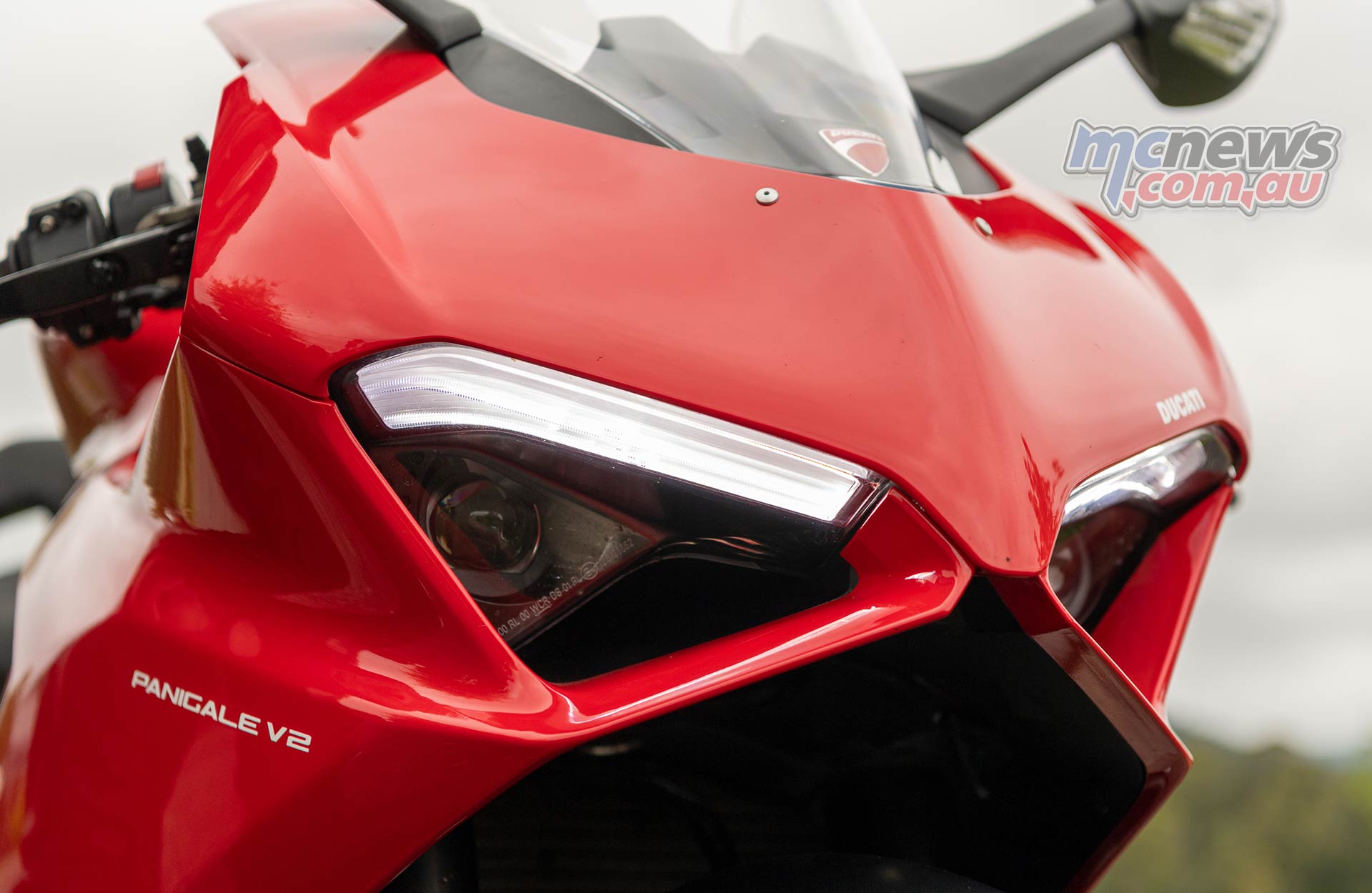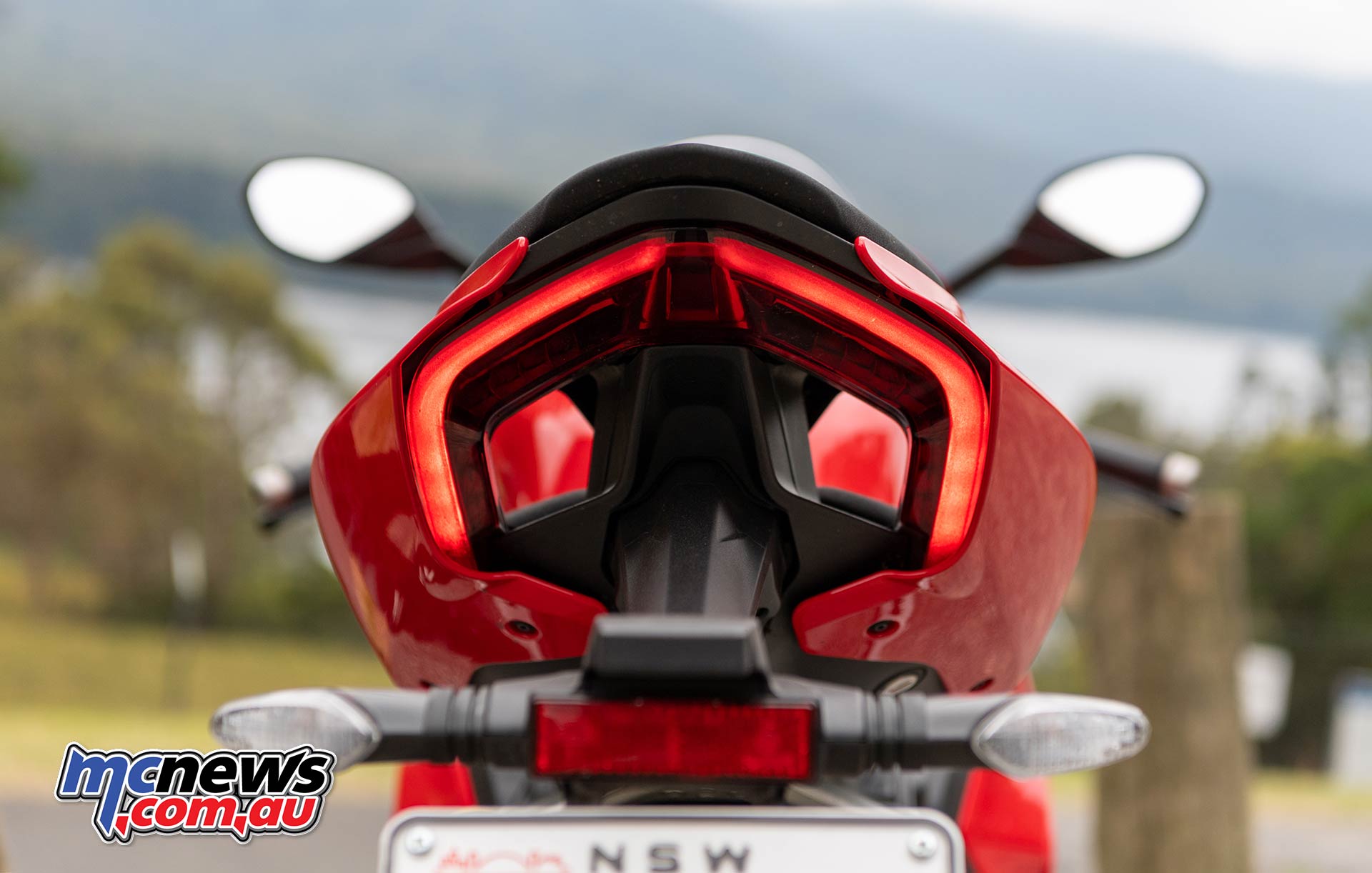Ducati Panigale V2 Review
Motorcycle Test by Vicko – Images RbMotoLens
I might be going against the flow here (hey it wouldn’t be the first time), but I’ve often thought that many of Ducati’s best bikes weren’t their flagships. Among others, I spent some time aboard the 848 back when it launched and thought it was leaps and bounds better than the 1098 as a real world proposition. It behaved itself properly, had a clutch that worked on the street, and handled far better than its bigger brother could ever hope to do.

Fast forward to 2021, and I suspect (without having ridden the V4 mind you), that the same will apply. The Panigale V2 is a belter of a bike. It’s not perfect as it makes very few concessions and I think it could still be improved upon – but the Panigale V2 could well be my pick of the dedicated sportsbikes that I’ve spent time with recently.
It’s not going to be the absolute quickest in some circumstances, obviously a full hump 200+hp Superbike would roll away in a straight line, but on most twisty roads and tracks for most riders, I reckon it could well be just as – if not more enjoyable – not to mention just as quick point to point. Bearing in mind that on a decent road, there’s never really that big a gap between 600s, 750s and 1000s anyway if they’re all being peddled hard. With the difference most often being the rider not the bike.
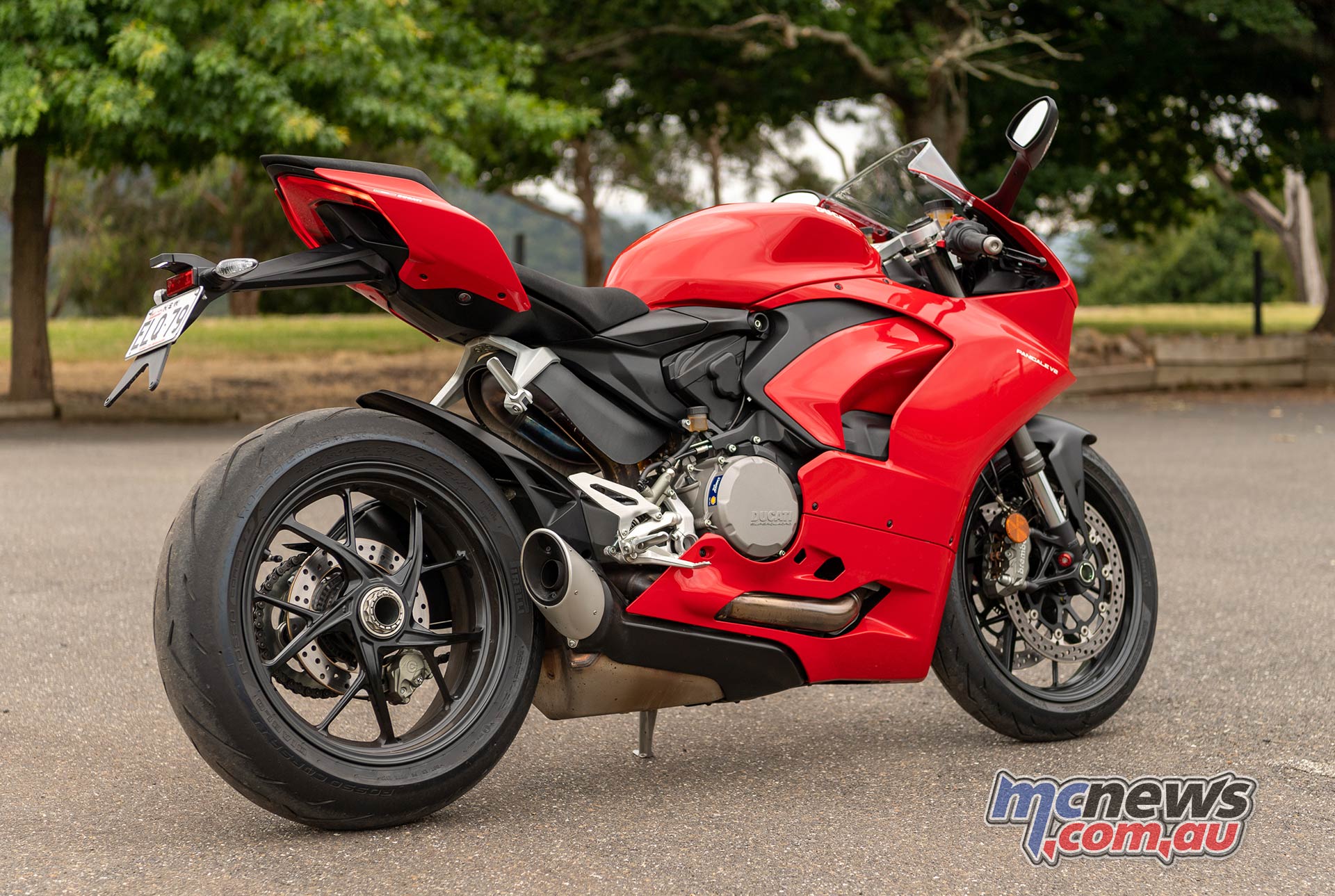
Think of it another way. The Panigale V2 pumps out 155 hp and 104 Nm. That’s roughly the same as superbikes were making in arguably their sales heyday 15 years ago. But this one comes with all the fruit of a modern day machine. ABS, TC, anti wheelie – all adjustable and lean sensitive. And top notch components. And while it doesn’t have the time warping pull of a full litre four, it has vastly more than a 600…
It’s also easy to overlook the fact that these are arguably the true modern day evolution of the 916 and 996 superbikes.. And those ‘only’ made around 115 ponies and 90 Nm. Yes I know the V4 things usurped them as the top of the pops in Ducati’s lineup – but this remains their top V2. I reckon it’s a worthy successor that has more in common with the 996 than the V4.
It doesn’t really have a lot of direct competition either, the closest would probably be the MV F3 800 that I’ve been keen to throw a leg over, and the underrated icon that is the GSX-R750. That’s about it. More’s the pity – that 150 hp-ish mark is probably the sweet spot in terms of overall packaging. Why don’t more manufacturers make sporty bikes in this power range? Beats me.
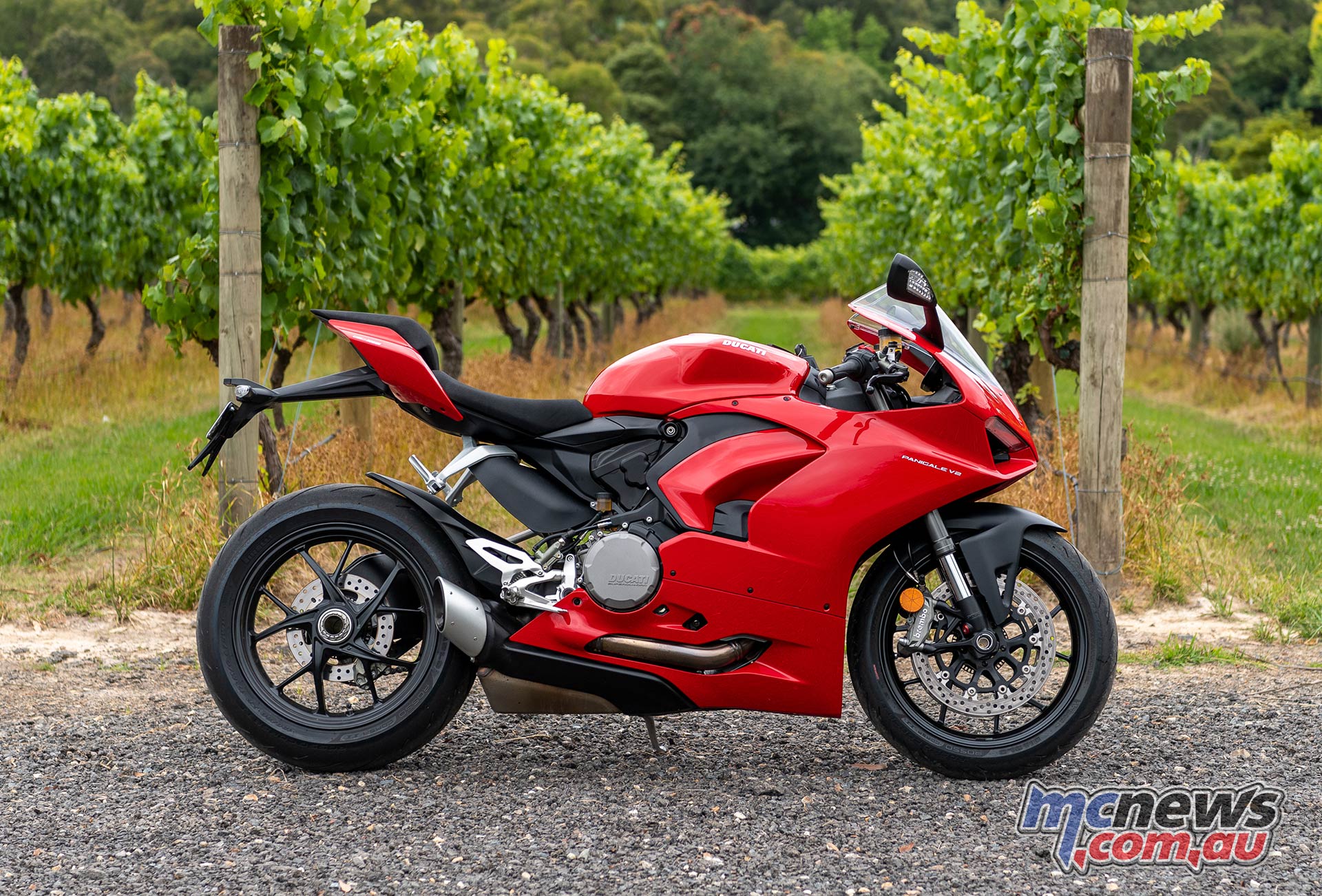
Spec’ wise, Trev gave the full run down of the Panigale V2 here when it first launched, but the basics are as follows: 955 cc Superquadro engine that produces 155 horses at 10,750 rpm along with 104 Nm of torque at 9000 rpm wrapped in a monocoque frame. Big Piston Showa 53 mm forks and a Sachs rear shock – both fully adjustable.
Electronics out the wazoo – six-axis Inertial Measurement Unit (6D IMU): ABS Cornering; Ducati Traction Control (DTC); Ducati Wheelie Control (DWC); Ducati Quick Shift up/down (DQS); Engine Brake Control (EBC). Three Riding Modes that are fully adjustable as well (Race, Sport, Street). All wrapped up in one of the prettiest packages available as it’s now adopted the full Panigale styling.
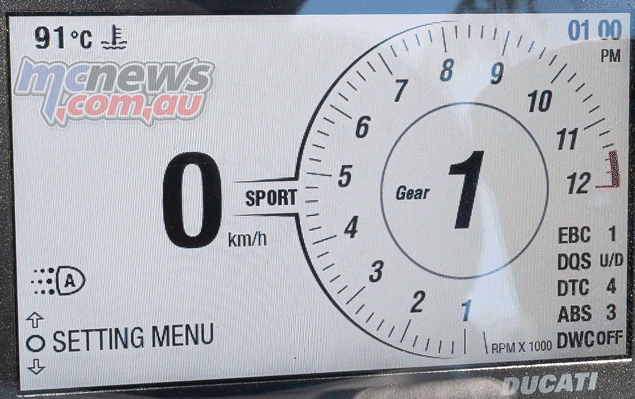
It really is a stunner, the updated bodywork looking amazing from all angles. Everywhere I stopped people would come up and look and chat or want to take pics. That new single swinger sets it off nicely too (the 959 that this replaces had a conventional swingarm and a much fussier exhaust design). I don’t really care if the single sided swingarm is any better – they look mint.
Interesting side note – you don’t really get to see any metal of the frame or engine cylinders from the side other than a small circle beneath the rear of the tank. Everything else is covered in plastic. Bit of a shame in some ways, but you don’t miss out on seeing a traditional trellis frame anyway as this has a monocoque frame that uses the chassis as a stressed member.
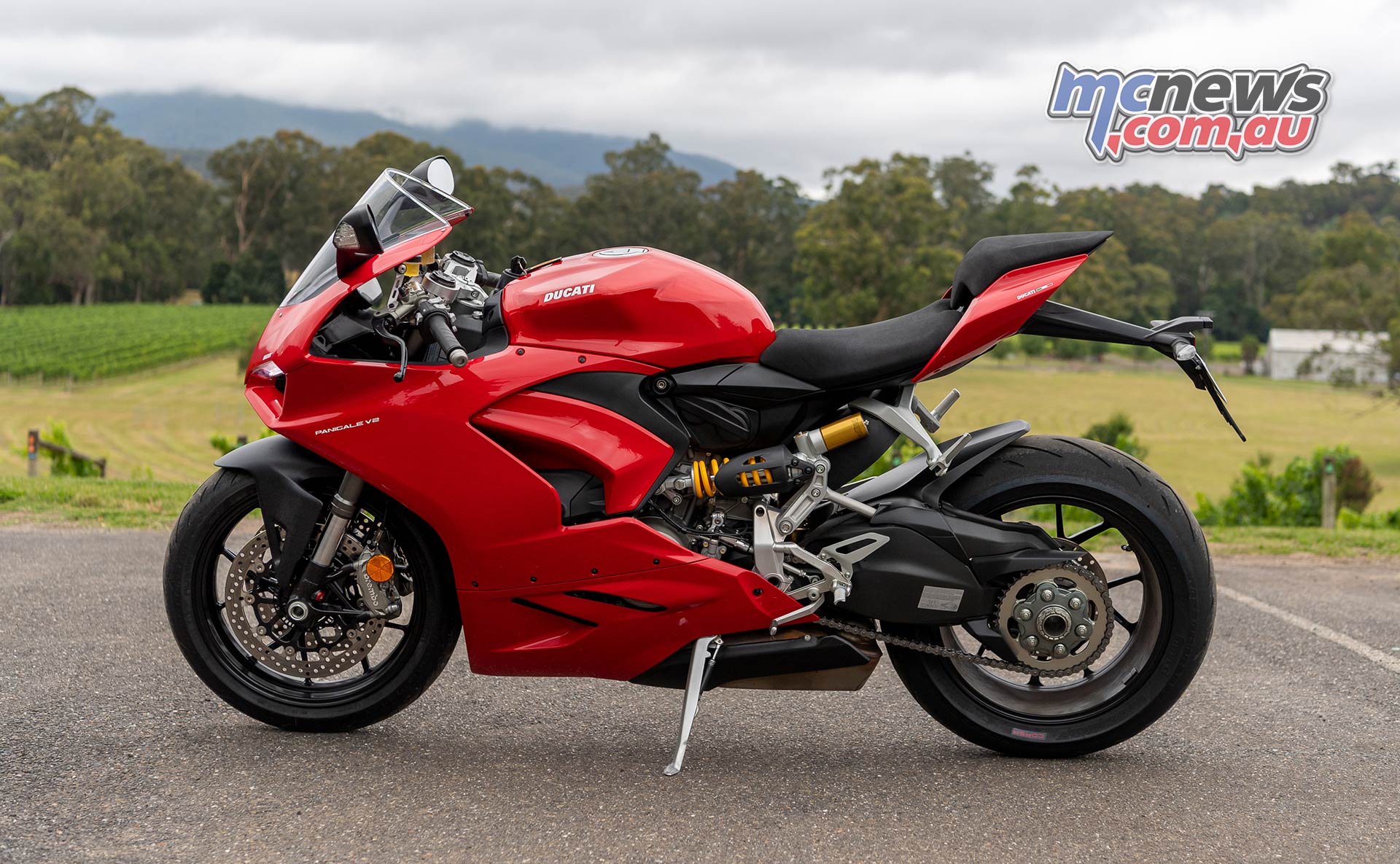
Climb aboard and you immediately notice how compact and nose down the ride position is. You do get used to it, but it’s certainly no lounge chair – I spent four big days on board amongst other more regular days. The smallest of those was probably 300 kilometres, the largest was eight hours and well over 500 clicks. It is not an easy, long distance hauler. That ride position is fine for having a crack in the twisties – but does get tiring within an hour on the highway.
Speaking of the nose down position, it’s there for a reason and translates into a wickedly good front end and other-worldly stability. It is absolutely bolted to the tarmac like having a giant invisible force pushing it into the deck. Wheelie fiends have to do a bit of work to get it to lift…
Handling wise it’s very, very good when on the attack. As good as any bike I’ve ridden. Better? Maybe. Just so smooth – and the change of direction is phenomenal. How they’ve managed to combine the levels of stability and agility is a little mind bending. Both the front and back are very firm, but they do manage to soak up smaller road bumps and holes reasonably well. ‘Below average’ roads are a bit of a struggle. But then, this is not really a bike for below average roads.
I was surprised to find that the rear was already backed right off to fully soft, as I’d have liked to try it a bit softer. And the front was set to quite soft as well (and I softened it off a little further still – leaving it only about a turn from full soft). That firmness is always going to be a compromise.
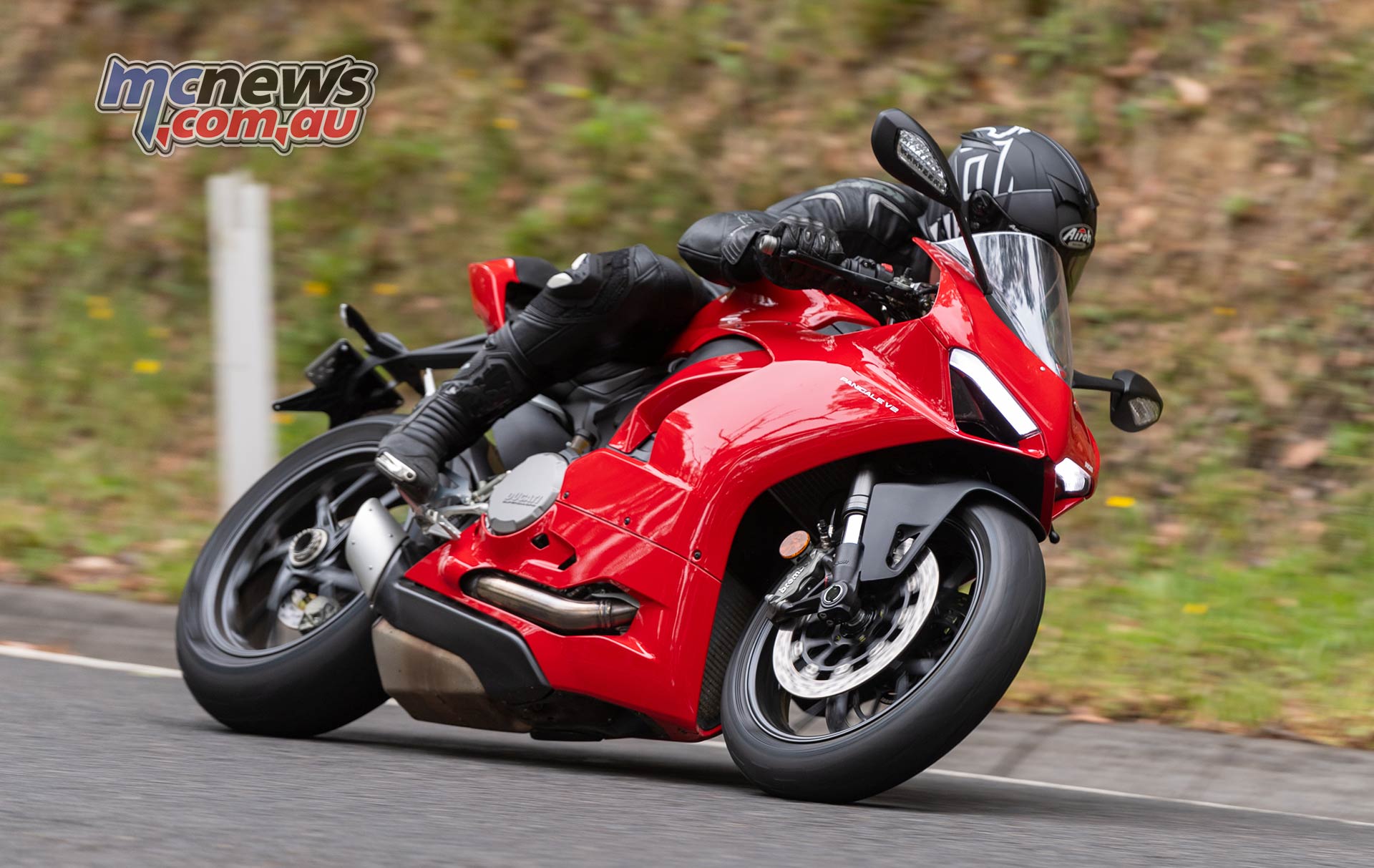
Like most modern, focussed sportsbikes, the whole package doesn’t really start to shine until speeds rise. On the shoot day we were rolling through some sub 100 km/h turns and it felt good, although a smidge uncommunicative. It was only when I started to step up my game a little more and throw it into faster corners later in the day at higher speeds that the package really came alive. As in, almost transforming it and becoming significantly more communicative. A bit of a light bulb moment actually. This is not a bike to ride at 5/10ths.
Getting stuck for an extended section behind holiday traffic up the black spur after already sitting in the saddle for a couple of hours was actually not very pleasant. But when you’re able to have a clear run and give it its head… Magic. On a track I think it would be hello Nirvana. It doesn’t get much better.
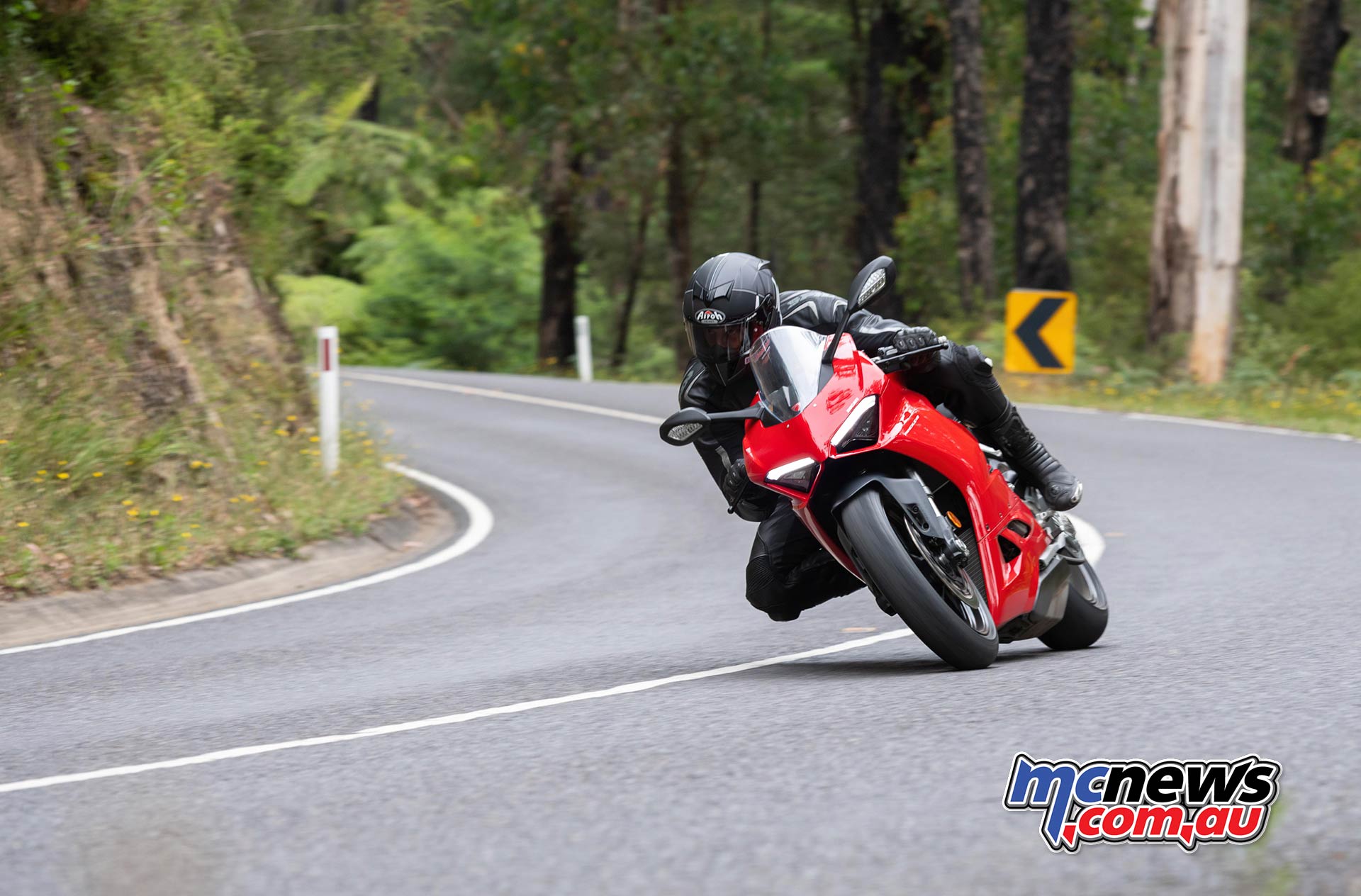
At speed, ridden with confidence, it positively sling-shots you out of corners on the gas. Whereas rolling about in tighter turns its capabilities are barely challenged and can feel a little dull. I’m guessing that’s because it’s still sitting a bit higher in the stroke and not in the optimal window. The Panigale rewards being ridden harder.
Fortunately – and this is its ace card – it’s a remarkably easy, unintimidating bike to ride fast. This is one bike I’d like to have in the shed to get really familiar with over a few months. I think it would continue to just get better and better as your confidence with it grew. After a couple of thousand kay’s I was only just starting to tap the potential.
Every time you twist the throttle your ears are rewarded with a sublime intake growl emanating from under the tank as the 90-degree twin sucks in volumes of atmosphere and transforms it into an equally sublime exhaust bark. The sound engineers have done well at both ends. Even the stock pipes with that updated underslung muffler sound great blipping at idle. However, I’m sure a little slip on couldn’t hurt.

It’s making solid power from as low as 3500 rpm and just keeps building and building as the revs rise and things get more rapid. That power delivery is reflected in Ducati’s dyno chart where there isn’t much to complain about at all. It’s nice and flat nearly all the way to red-line, other than the slightest of dips at around 5500 rpm which you don’t notice much on the road. Certainly from 6000 rpm up it’s making good hump.
Modern electrowizardy mean that long gone are the days of grumpy twins. It will sit at 35 km/h on a constant throttle in second gear – at 2600 rpm. Happy as a clam. No hunting or hiccupping or anything of the sort.
60 km/h is 3000 rpm in third. 105 km/h is 4000 rpm in fourth. It does like a drink though. Even with a fair amount of highway work I was seeing the fuel light come on at around 200 kilometres… Good excuse to stop and have a stretch I guess.
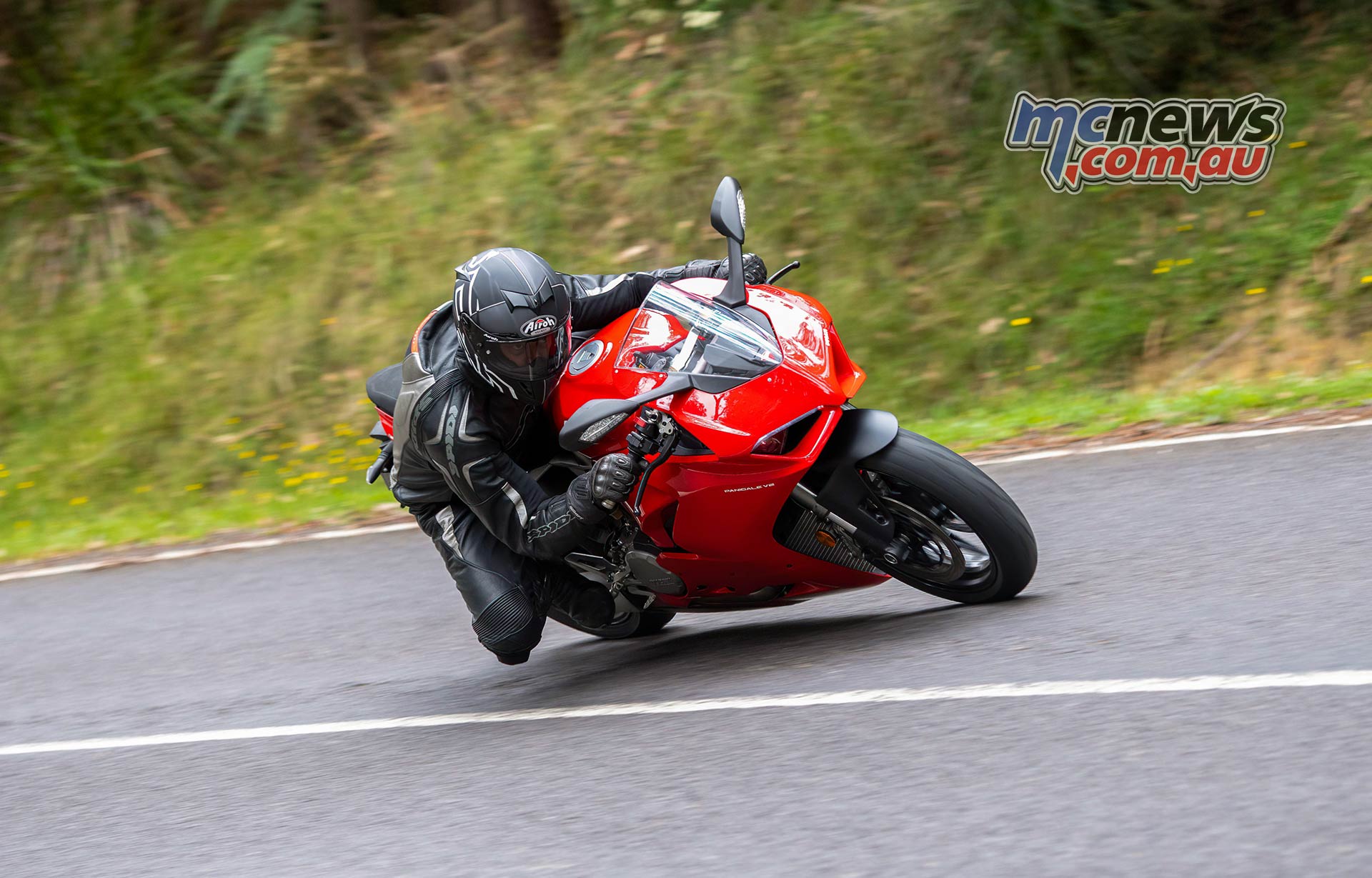
Comfort/shape wise I have a couple of things I’d tweak. The tank shape itself and the junction of surfaces and materials directly under the tank could do with some attention. I found my knees naturally wanting to sit just below the lower ‘ripple’ towards the bottom of the tank shape and as such would be sitting near, or on, the surface change of black plastic which was a little distracting.
My knees didn’t lock into where you might think they should by looking at the tank. Not a major issue, but I think it could be better. This was also the area that I found the most heat coming from, you feel it on the inside front of your thighs. Not terrible when you’re above 80 km/h and/or the temp in under 25-degrees. But get a warmer day or slower speeds and you’ll have chestnuts roasting on an open fire. Uncomfortable, verging on painful, especially in traffic.
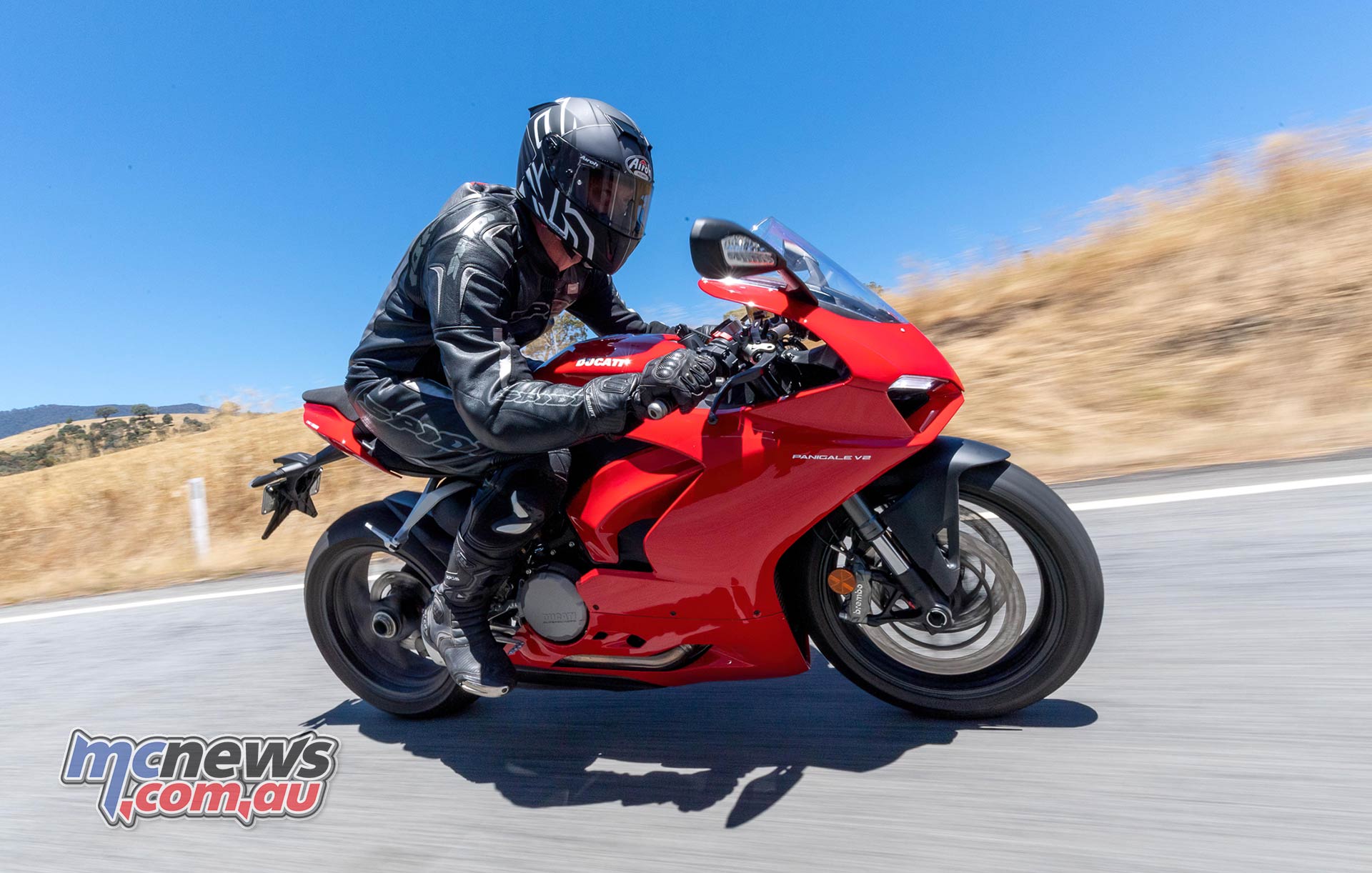
Overall with that nose down focussed riding position, boring extended highway miles move into the ‘just tolerable’ basket. The lack of fairing protection (the front screen is apparently a little smaller than the V4s), and subsequent wind on the chest when you sit up a little actually provides a little bit of assistance. But this is not a Tourer let alone a Sports Tourer. You’ll have to endure the straight bits that get to your favourite set of twisties. Fine as long as the bends aren’t that far away…
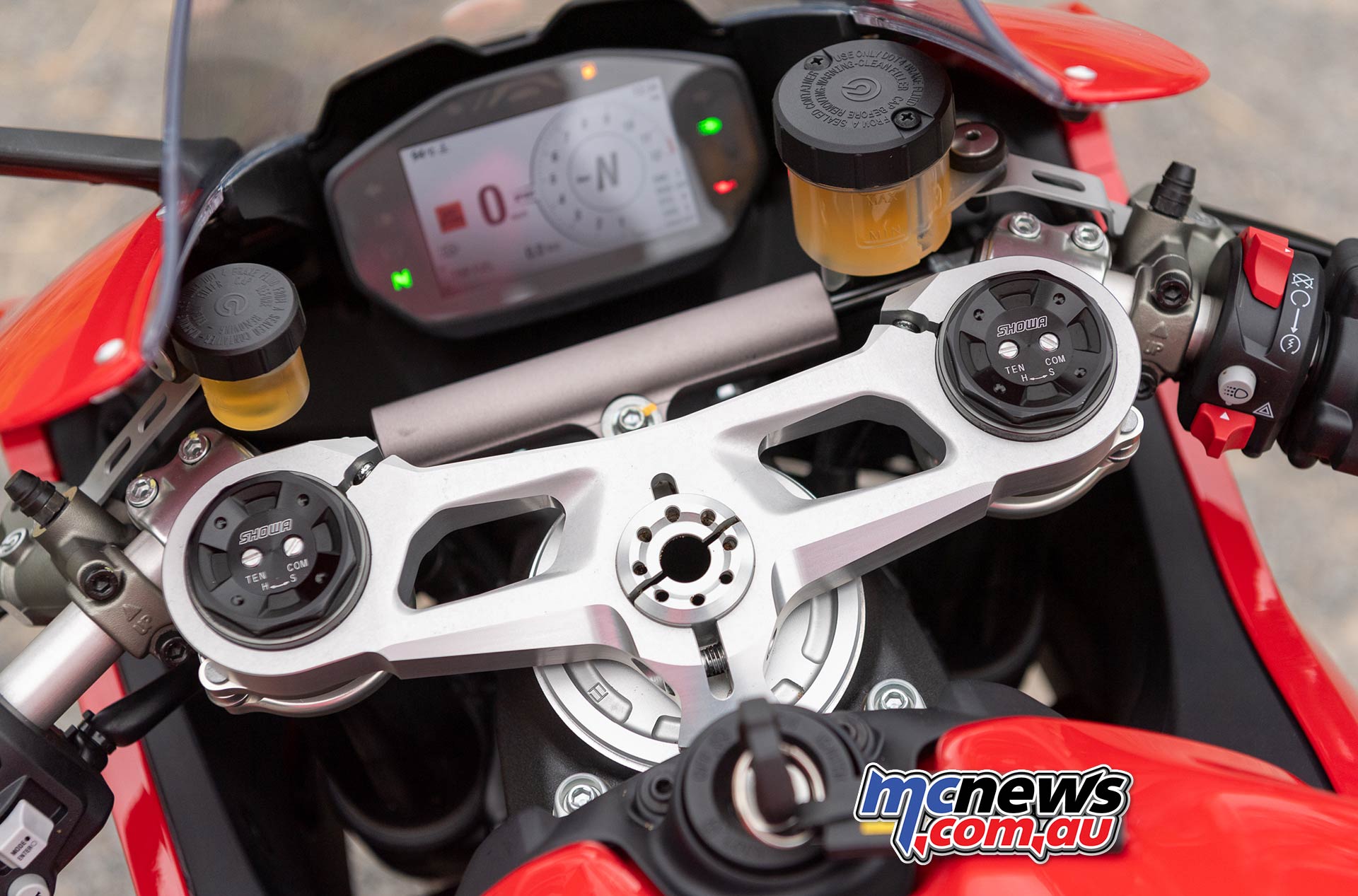
From a practicalities stand-point – The mirrors are positioned and shaped well for usability – but do vibrate a little too much at highway speeds, which means you have trouble seeing a clear picture of what’s behind you. The side-stand is a lesson in form over function as it’s tucked up so neatly that it’s next to impossible to snag it with your heel on the first attempt. And the whole seat and tail unit needs a mention.
While visually beautiful (and the seat is surprisingly well padded and comfortable actually), it was a tad painful to clean. I’m sure there’d be a way to do it efficiently though once you sorted your shit out. No doubt I just didn’t have the perfect cloth/brush/thingamajigger to jam through the gaps.
Brakes and overall stability during braking are simply amazing – as you’d expect from a pair of Brembo monoblocs biting into 320 mm discs up the front, but I actually really liked the rear brake especially. Heaps of bite and pedal feel. No doubt braking performance and grip overall is helped by that nose heavy weight bias.
Clutch wise it’s a nice slipper, but it does feel a little two-stage on release from standstill. Didn’t feel like a natural hard launcher to me like some bikes can, but didn’t really cause any problems either.
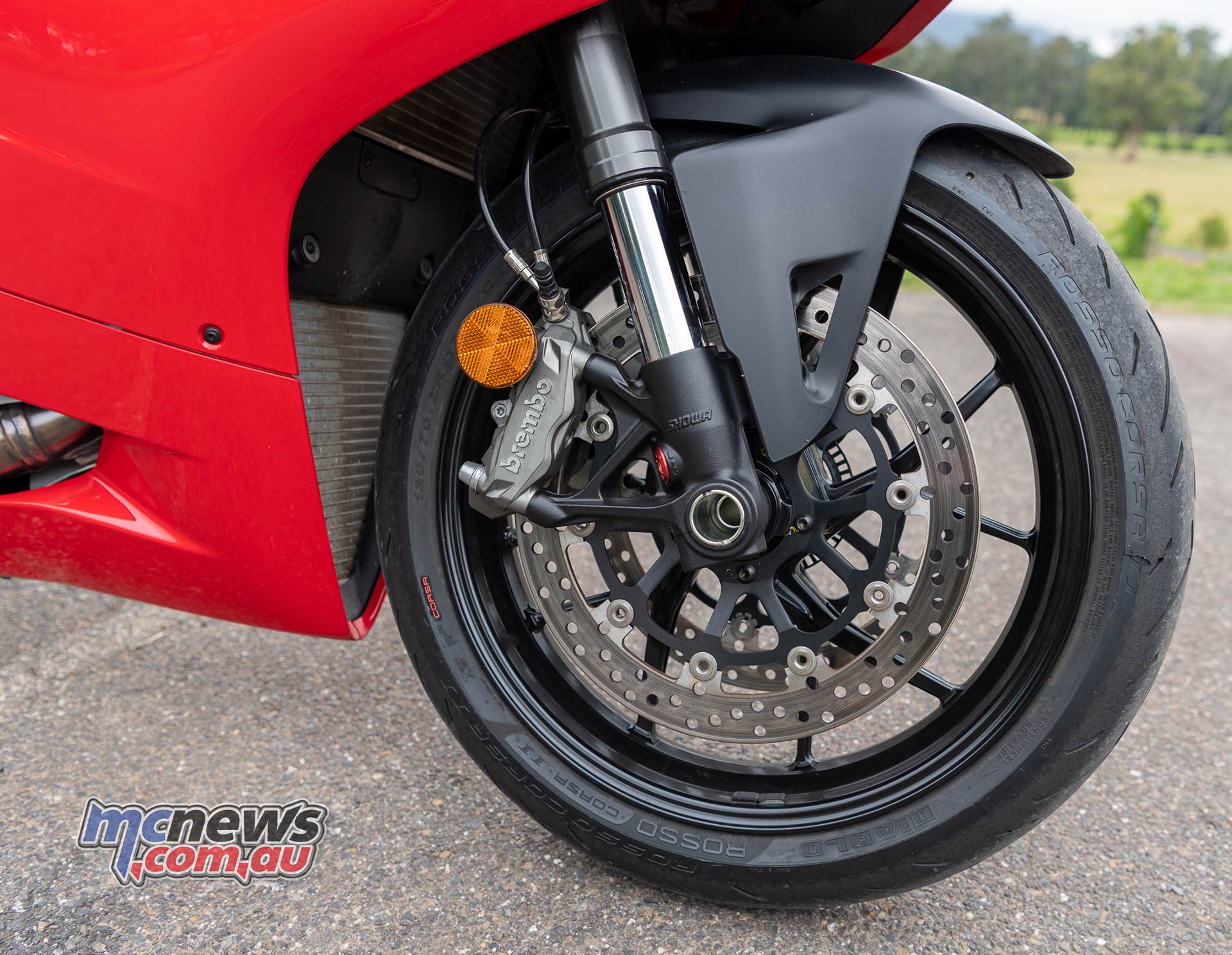
Electronics-wise – the systems are so good you have to focus to be able to feel them assisting. They come in nice and gently and just quietly help you on your way if you overstep things. Think of it as your clever Italian fairy god mother watching over you. I ran it in sport mode most of the time (out of Street, Sport and Race). There you still get the full 155 hp on tap, but I found the delivery to be slightly smoother with no down side.
You can fine tune each system within the presets though – and I ended up turning off the wheelie control completely but leaving the rest pretty much unchanged. It’s hard enough to get the front to lift intentionally even with it turned off. Once up it balances nicely, but you definitely have to earn it…
The TFT dash itself is well laid out other than not showing a fuel gauge – a fuel trip meter that counts up (another pet hate), appears when the fuel light comes on. And for the most part the dash is easy enough to use the controls once you get used to the system. I did accidentally reset the trip meter several times though which was a little annoying due to the aforementioned lack of fuel gauge.
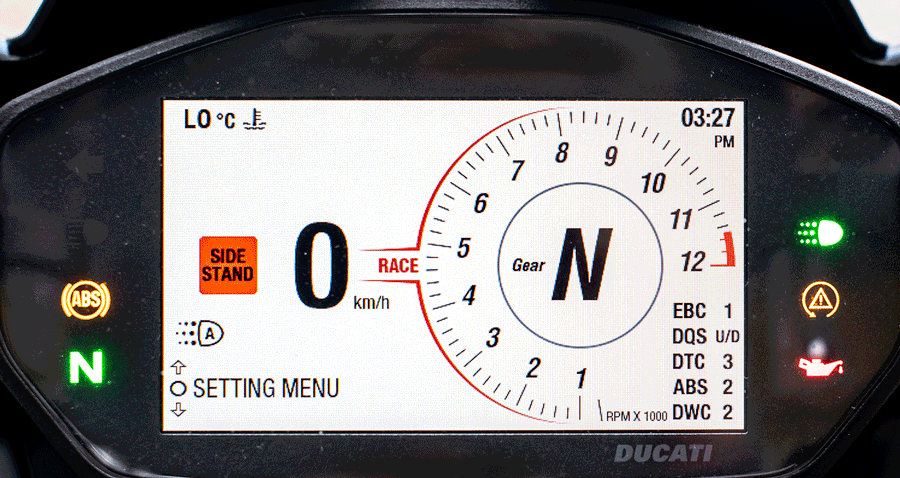
So where does it leave us? Well, part way through my first big ride I texted my mates wondering if I’d found the perfect sportsbike for mortals. Other times after sitting in the saddle for a few hours on the highway the ride position was tiring and downright painful. All up though, I still think it’s as close to perfect as you’re likely to find for what it’s designed for, with a caveat being that the V2 is not designed for dawdling. That nose down ride position and bbq under your nether regions really are for carving corners at speed.
This is a bike for riders who want to stretch their own boundaries. It’s one of the best handling, seriously focussed bikes available and needs to be ridden as such. A properly rewarding bike that instead of being intimidating, actively encourages you to explore its limits.
I was pleasantly surprised by the price tag too. 23 grand for a real world drop dead gorgeous doo-cart-i. It’s hard to argue against isn’t it? Especially with 12,000k service intervals (valves at 24,000). The GSX-R750 is $17.5 grand which is no doubt great value, but doesn’t have the cache or allure that this gorgeous Italian job does.
The MV F3 800 comes in at $27 grand ride-away and Yamaha’s R1 is $26.5 just for reference. I reckon most people would have more fun, be safer and faster on one of these than a full 200+ hp bike at the track too because as opposed to the 200+ hp jobbies you are actually able to get the most out of the bike.
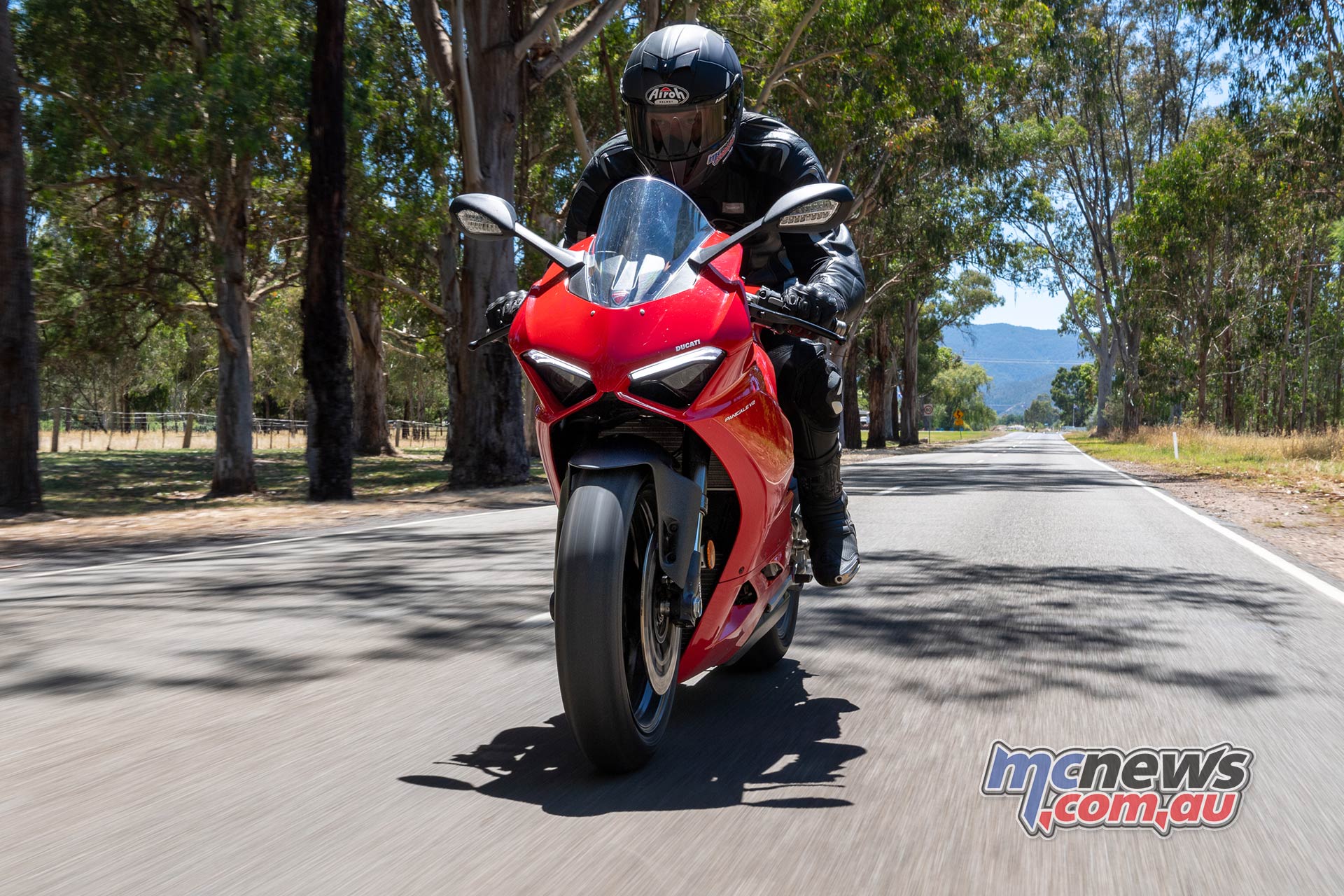
In fact… I’m calling it. The Panigale V2 is arguably a better bike than any of the four-cylinder litre plus Supermegahyperbikes on the market for the right rider. If you’re looking for a seriously focussed, dedicated sportsbike to punt hard and do some track days on as well, and you don’t need to do many long highway hauls – this should be near the top of your list. It would happily get a spot in my shed in those circumstances. And I’d just have to learn how to get it to wheelie consistently. What a chore…
It’s got me completely reassessing the whole crop of 200+hp bikes as a bit unnecessary to be honest. Looks bloody good next to the Husky 701LR at the moment too… Perfect two bike combo covering both extreme ends of riding genres? It’s not a terrible idea…

Why I like it
- Just look at it. Italian supermodel. It’s stunning!
- Real world performance for 99.9 per cent of mortals
- Incredible blend of stability and agility
- Makes all the right noises – both in and out
- It really is a focused thing – Gets better the harder you push it
I’d like it even more if…
- Suspension arguably a little too firm for the road at anything under 9/10ths
- Who put the barbie under the seat?
- The tank-fairing junction and knees contact surface could be improved
- Clutch take-up feel could be better from stand-still, but great on the go
- Not a lot of range, but.. I probably wouldn’t care.

Ducati Panigale V2 Specifications
| Ducati Panigale V2 | |
| Engine | Superquadro 90° V2, 4 valve per cylinder, Desmodromic, liquid cooled |
| Displacement | 955 cc |
| Bore X Stroke | 100 x 60.8 mm |
| Compression Ratio | 12.5:1 |
| Power | 114 kW (155 hp) @ 10.750 rpm |
| Torque | 104 Nm (76.7 lb-ft) @ 9.000 rpm |
| Fuel Injection | Electronic fuel injection system. Twin injectors per cylinder. Full rideby-wire elliptical throttle bodies |
| Exhaust | 2-1-2-1 system, with 2 catalytic converters and 2 lambda probes |
| Gearbox | 6 speed with Ducati Quick Shift (DQS) up/down EVO 2 |
| Primary Drive | Straight cut gears; Ratio 1.77:1 |
| Ratio | 1=37/15 2=30/16 3=27/18 4=25/20 5=24/22 6=23/24 |
| Final Drive | Chain; Front sprocket 15; Rear sprocket 43 |
| Clutch | Hydraulically controlled slipper and self-servo wet multiplate clutch |
| Chassis | |
| Frame | Monocoque Aluminium |
| Front Suspension | Fully adjustable Showa BPF fork. 43 mm chromed inner tubes |
| Front Wheel | 5-spokes light alloy 3.50″ x 17″ |
| Front Tyre | Pirelli Diablo Rosso Corsa II 120/70 ZR17 |
| Rear Suspension | Fully adjustable Sachs shock. Aluminum single-sided swingarm |
| Rear Wheel | 5-spokes light alloy 5,50” x 17” |
| Rear Tyre | Pirelli Diablo Rosso Corsa II 180/60 ZR17 |
| Wheel Travel(F/R) | 120 mm (4.72 in) – 130 mm (5.12 in) |
| Front Brake | 2 x 320 mm semi-floating discs, radially mounted Brembo Monobloc M4.32 4-piston callipers with Cornering ABS EVO |
| Rear Brake | 245 mm disc, 2-piston calliper with Cornering ABS EVO |
| Display | Digital unit with 4,3″ TFT colour display |
| Dimensions | |
| Dry Weight | 176 kg (388 lb) |
| Kerb Weight* | 200 kg (441 lb) |
| Seat Height | 840 mm (33,1 in) |
| Wheelbase | 1436 mm (56,5 in) |
| Rake | 24° |
| Front Wheel Trail | 94 mm (3.70 in) |
| Fuel Tank Capacity | 17 l – 4.5 gallon (US) |
| Number Of Seats | Dual seat |
| SAFETY EQUIPMENT | Riding Modes, Power Modes, Cornering ABS EVO, Ducati Traction, Control (DTC) EVO 2, Ducati Wheelie Control (DWC) EVO, Engine, Brake Control (EBC) EVO, Auto tyre calibration |
| STANDARD EQUIPMENT | Ducati Quick Shift (DQS) up/down EVO 2, Full LED lighting with Daytime Running Light (DRL), Sachs steering damper, Auto-off indicators, Ducati Data Analyser+ (DDA+) with GPS module, Ducati Multimedia System (DMS), anti-theft, Ducati Lap Timer GPS (DLT GPS) |
| Maintenance & Warranty | |
| Maintenance (Km/Months) | 12,000 km (7,500 m)/12 months |
| Valve Clearance Adjustment | (KM) 24,000 km (15,000 m) |
| Warranty (Months) | 24 months unlimited mileage |
| Price | From $23,000 Ride Away |
